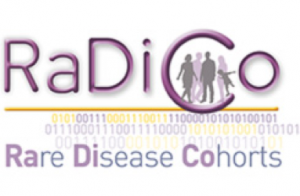Home > Research in rare liver diseases > Clinical research > Cohorts and registries
Cohorts and registries

What is a cohort?
A cohort is a defined group of people that is monitored for a predetermined length of time in order to follow disease progression and to identify the onset of health outcomes of interest.
What is a registry?
A registry is an anonymized and secure database made up of a precise amount of data (medical, administrative…) concerning a group of patients from a geographically defined population and having a shared characteristic in common.
DEFI-ALPHA
“Descriptive study of a cohort of children suffering from paediatric Alpha-1 Antitrypsin Deficiency”
Alpha -1 Antitrypsin Liver Disease (AATD) is a disease that affects both children and adults.
The constitution of a cohort of children with an AATD aims at being able to analyse the progression of their liver damage but also to have a better knowledge of their lung prognosis. This cohort could thus help optimising and organising management of these diseases.
Status: ongoing recruitment (181 patients included, 27 participating centres)
Principal Investigator: Pr A. Lachaux
Partners: laboratory LFB (Dr E. Jaudinot et S. Rimbaud)
Contact:
L. Restier MSc, PhD, lioara.restier@chu-lyon.fr
HEPATIMGO
“Cohort linked to the Western France research and study network HEPATopathies auto-IMmunes in the Grand Ouest region”
The objective of this cohort is to federate all of the Gastrointestinal departments of the CHU and CHR in the Grand Ouest region especially to improve understanding of AIH and patient care. Currently, the cohort is still monocentric regarding the samples collected. The 7 other centres to be opened are: Angers, Brest, Orléans, Poitiers, Rennes, La Roche-Sur-Yon and Tours.
Status: ongoing recruitment (155 patients included, 7 centres in the Grand Ouest region plus Saint-Antoine Hospital in Paris)
Principal Investigator: Dr Jérôme Gournay
Coordinating institution: CHU de Nantes
Contact :
Christelle ONANA, network facilitator:christelle.onana@chu-nantes.fr
RadiCo-COLPAC
“National cohort for the epidemiology, clinical
and genetic heterogeneity of the syndrome: Low Phospholipid-Associated Cholelithiasis (LPAC)”

LPAC syndrome is a rare and symptomatic form of intrahepatic cholesterol gallstones occurring in young adults (aged under 40), of genetic origin, characteristically recurrent after cholecystectomy and often positively responding to ursodeoxycholic acid (UDCA) treatment. It is a clinically and genetically heterogeneous disease, for which prognosis and progression cannot be predicted and its prevalence in the general population remains unknown.
This cohort was set up to include retrospective and prospective data, from patients suffering from LPAC syndrome with the aim to: 1) define the epidemiological basis of the disease; 2) clarify the clinical and prognostic range of the disease as well as its response to UDCA treatment; and 3) set up a large genomic DNA registry in order to characterise the genetic heterogeneity of the disease and to identify new predisposing genes.
This project should improve diagnostic and therapeutic care for patients and identify new mechanisms involved in the pathophysiology of biliary lithiasis.
Status: Ongoing recruitment (202 patients included, 17 participating centres, including 11 network reference or competence centres)
Principal Investigator: Dr Christophe Corpechot, Hôpital Saint-Antoine
Partners:
- Coordinating partner: INSERM
- Institutional partners responsible for project implementation: Paris Descartes University, Paris Diderot University, Pierre et Marie Curie Hospital, Paris Est Créteil University, Aix Marseille University, Les Entreprises du Médicament, Alliance pour la Recherche et l’Innovation des Industries de Santé, Montpellier 1 University and the Nîmes University Hospital Centre.
Contact : Dr C. Corpechot, cmr-mivb@aphp.fr
OFAVB :
“French Observatory for Biliary Atresia”
The first national enquiry for Biliary Atresia (BA) was carried out in 1997, and the French Observatory for Biliary Atresia (OFAVB) was set up accordingly, with the collaboration of 45 centres involved in caring for these children. The registry thus created was approved by the INSERM and the French Institute of Health Watch (Institut de veille sanitaire, InVS).
This registry includes all of the patients born in France since 1986 who suffer from BA. Data was collected via successive national enquiries. The 4th enquiry is being finished and includes slightly more than 1300 children.
Data from the OFAVB enable us to improve our knowledge of BA prognosis and epidemiology, to identify factors accessible for improvement and to target actions aimed at improving patient care. A dozen articles have been published from this work.
Supervisor: Pr. C. Chardot, Hôpital Necker
Disease concerned : Biliary Atresia
Date of creation: 1997
Number of patients included: 1300
Geographical coverage: nationwide
Contact : christophe.chardot@aphp.fr
VALDIG
“French registry for the Vascular Liver Disease Group”
This is a national registry including clinical and biological data from patients suffering from rare vascular liver diseases originating from the reference centre for vascular liver diseases (Beaujon Hospital) but also between 2002-2010 from 12 regional participating centres and between 2010-2016 from 6 participating centres. This registry is also associated with a biobank.
Supervisor: Dr. A. Plessier, Beaujon Hospital
Diseases concerned : Budd-Chiari Syndrome (BSC), hepatic vein thrombosis, portal vein thrombosis (PVT), hepatoportal sclerosis and obliterative portal venopathy
Date of creation: 2002
Number of patients included: 950
Geographical coverage: nationwide et Europe-wide
Contact : kamal.zekrini@aphp.fr
VEDROP
“Registry of paediatric patients treated with Vedrop (tocofersolan) in Europe for vitamin E deficiency
due to congenital digestive malabsorption or hereditary chronic cholestasis”
Data collected concerning demographic characteristics of the patients, use of Vedrop, its efficacy and safety profile.
Supervisor: Pr. E. Jacquemin, Bicêtre Hospital
Diseases concerned : paediatric cholestasis
Date of creation: 2009
Numbr of patients included: 500
Geographical coverage: Europe
Contact : isabelle.friteau@aphp.fr
MIVB
“Database for inflammatory biliary diseases”
Reference centre for inflammatory biliary diseases and autoimmune hepatitis, Saint-Antoine Hospital, Paris.
The MIVB database contains data (clinical, biological, imaging…) from about 1000 patients suffering from inflammatory biliary diseases. For now it is a monocentric database (data from patients monitored at the CRMIVB-H) but it is destined to become a multicentric (inclusion of patients from competence centres) and national database.
Supervisor: Dr. C. Corpechot
Diseases concerned : Primary Biliary Cholangitis (PBC), Primary Sclerosing Cholangitis (PSC), LPAC Syndrome, Overlap Syndrome (PBC + Autoimmune Hepatitis, PSC + Autoimmune Hepatitis)
Date of creation: 1999
Number of patients included: 1150
Geographical coverage: monocentric
Contact : farid.gaouar@aphp.fr
NAPPED
« Natural course and prognosis of PFIC and effect of biliary diversion »
NAPPED: “Natural Course and Prognosis of PFIC and Effect of Biliary Diversion” is an international data study supervised by Pr Verkade in Gronningen. Coordinator in France: Pr Emmanuel Gonzalès.
Progressive Familial Intrahepatic Cholestasis (PFIC) covers a heterogeneous group of recessive autosomal rare liver diseases with an estimated incidence of between 1/50000 and 1/100000 births. To date, 6 types of PFIC have been identified. The study presented here will only collect data from patients suffering from PFIC1 and PFIC2.
The first signs of PFIC 1 and PFIC 2 generally appear within the first months following birth with hepatomegaly, the most often with neonatal jaundice which may be persistent or become recurrent, and with chronic pruritus that is generally very severe. Patients develop fibrosis that progresses to cirrhosis requiring liver transplantation before reaching adulthood in 50% of cases.
The current state of knowledge concerning PFIC1 and 2 does not enable us to establish a solid genotype/phenotype correlation for symptom severity and the natural course of the disease. Furthermore, pharmacological therapies, biliary diversion surgery and liver transplantation can have different effects and complications depending on the patient and correlations with the genotype remain fragile. Also, some targeted pharmacotherapy approaches have been developed but it remains difficult to select which patients should be given these treatments. Therefore, the aim of this study is to establish genotype/phenotype correlations in order to predict (i) the course of disease for a given patient and (ii) the success of treatments on offer. The results of this study could therefore greatly improve patient management.
Supervisor: Pr Henkjan Verkade (Groningen Centre, Holland)
Coordinator in France: Pr Emmanuel Gonzalès
Diseases concerned : Type 1 and type 2 Progressive familial intrahepatic cholestasis
Date of creation: 2017
Geographical coverage: 582
French participating centres: international registry
French participating centres : Bicêtre, Necker, Lyon, Toulouse, Lille, Marseille
Status: ongoing recruitment (retrospective + prospective)
